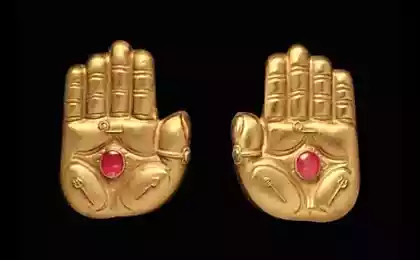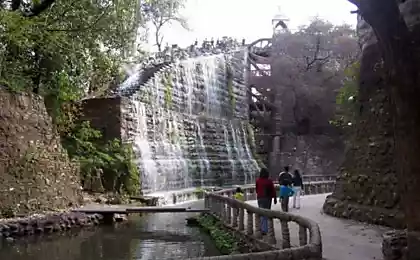1289
10 deadly rocks and minerals.
by Masterok
It will be 10 pictures and letters attached to them.
1. Koloradoit (Coloradoite)
Koloradoit - a newly discovered crystalline mineral normally found in the veins of magma. This mineral is a compound of mercury telluride, form when the alloy of mercury and tellurium, another highly toxic and rare metals. Therefore koloradoit toxic represents a double threat for those who dare to take it in hand. The combination of these two elements creates a risk of serious injury when carelessly handling. When heated or chemical changes, this strange mineral releases deadly vapor and dust. What is most interesting - this mineral is mined to produce tellurium contained in it. Tellurium minerals can also be found in combination with gold, but the earlier of such combinations has not been known. By a strange twist of fate deposits koloradoita developed in Australia during the gold rush of unusual after people realized that the stones of tellurium containing gold, fill potholes in the roads.

2. chalcanthite (Chalcanthite)
Alluring bluestone blue crystals composed of copper, in combination with sulfur and other elements, as well as water. This composition makes the copper, which is essential for the organism, but which becomes toxic in excessive quantities and in very bio-available crystal. In other words, the copper becomes soluble in water and can be absorbed in large quantities in any plant or animal, rapidly weakening him and then killing of the fact that the important internal organs stop working. Scientists lovers should never try to chalcanthite salt content, because in this case, they may occur extremely serious overdose of copper. Simple extraction of the crystal blue mineral that killed all the algae pond as a whole, in addition, these crystals are capable of creating great environmental problems. Because of the incredible beauty and rarity of bluestone, within the geological community appeared enterprise engaged in the cultivation of artificial crystals for sale that are advertised as authentic samples.
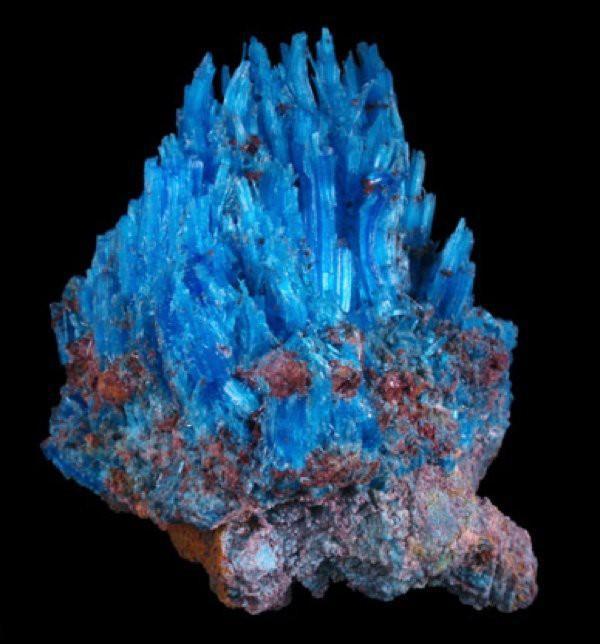
3. Hutchinson (Hutchinsonite)
Thallium - a grim twin lead. This dense, oily metal similar to lead by atomic weight, but is even more lethal. Thallium is a rare metal, which appears in a very toxic compound consisting of a rather strange combinations of elements. The effects of thallium is even more strange, and include hair loss, serious illness in contact with skin and in many cases lead to death. Hutchinson is a dangerous, but an amazing mixture of thallium, lead and arsenic. Three toxic metal to form a lethal cocktail of minerals, which must be handled with great care. Hutchinson was named in honor of John Hutchinson (John Hutchinson), mineralogist famous Cambridge University. This mineral can be found in the mountainous regions of Europe, mainly in the fields of ore.
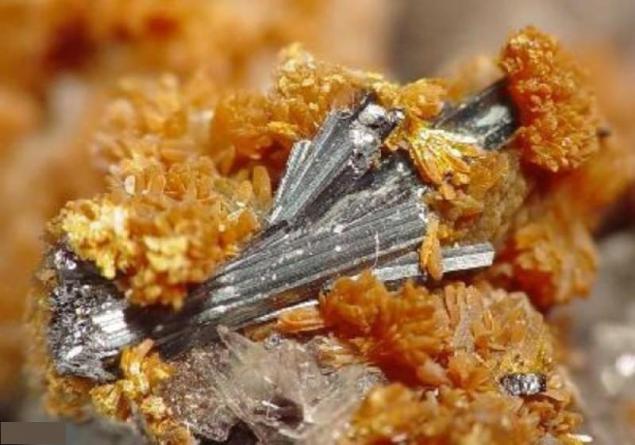
4. Galena (Galena)
Galena is the principal ore used for the production of lead. It is a shiny silver cubes unnaturally perfect shape. Despite the fact that lead is usually very flexible, the sulfur content in galena makes it extremely brittle and amenable to chemical processing. Galena is able to cause severe consequences for workers and researchers, lovers, who worked with him without compliance with safety measures. Work samples may result in respirable dust. The workers in the mines are at high risk of poisoning by contact with minerals and deadly dust generated during the production. After extraction of lead from this mineral creates ecological threat to human health during his treatment and purification. Galena has a cubic process fracture, and if hit it with a hammer, the crystal will collapse into several smaller copies of their original form.
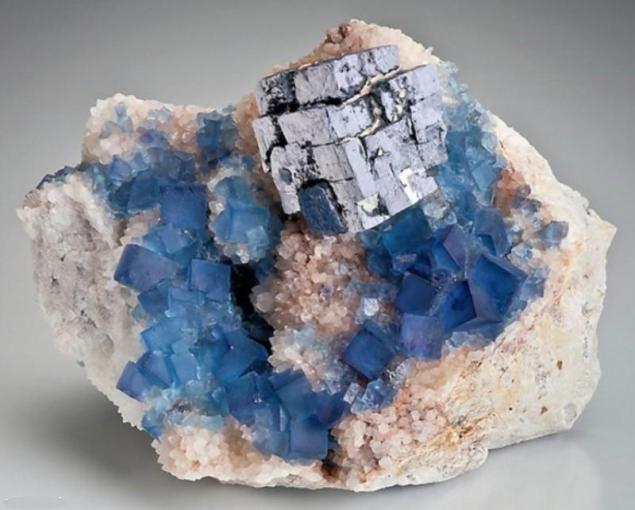
5. Asbestos (Asbestos) otherwise chrysotile (Chrysotile) or Aamfibolit (Amphibolite)
Asbestos - it's not an artificial product, however, it is one of the worst minerals on the planet. While other minerals act like toxins because of their chemical composition and accidental poisoning victims of asbestos to the fullest holds a mechanical diversion in human lung. Asbestos refers to all categories of natural minerals and consists of silicon dioxide - the most abundant mineral in the world solid, iron, sodium and oxygen. Asbestos deposits consist of clusters of thousands of tiny, whiskers, which can be transported by air. They can also easily get into your lungs. Carcinogenic effects occur due to permanent irritation of lung tissue, resulting in scarring. Education asbestos can be found among any set of siliceous rocks, so the study of these rocks have to comply with the relevant safety rules. Oddly enough, the natural weathering leads to the spread of natural asbestos in the atmosphere. As a result, in the lungs of many people can find a small amount of asbestos fibers.
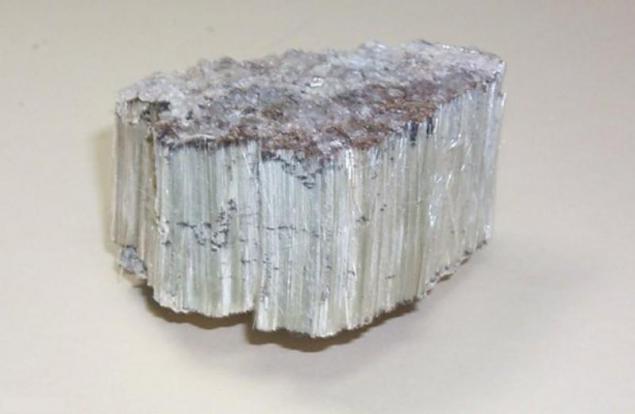
6. Arsenopyrite (Arsenopyrite)
Arsenopyrite - it's fool's gold, but with a slight difference. Man, confusing it with gold, will not just be a fool. Equally silly solution is picking up this mineral from the earth during the campaign for a career, and further use of the hands, which visited this mineral for the preparation and consumption of food. Arsenopyrite is iron sulphide and arsenic, which relates to the same type minerals as pyrite (fools gold or iron sulfide), the difference lies in the fact that it contains a heavy arsenic addition. When you try to heat or any change in the mineral, he begins to exude a strong garlic odor of arsenic, which comes from a fatally toxic, corrosive and carcinogenic fumes produced by this mineral. Even the processing of this mineral causes a person to contact with the volatile sulfur salts of arsenic. Interestingly, the arsenopyrite can be determined simply by hitting it with a hammer. As soon as the sparks fly, you can for a brief moment to feel a strong smell of garlic.

7. Thorburn (Torbernite)
Thorburn is a mineral from hell. Green prisms are formed as secondary deposits in granitic rocks and consist of uranium. Formed in the complex reaction between phosphorus, copper, uranium and water, great clusters of crystals often tempted collectors of its kind, so people took samples of these minerals for their collections, arranged on shelves. If the decay of uranium in Chernobyl was not enough, the deadly radon gas, can cause lung cancer, slow the basis of these beautiful stones. This is the crystal that is left alone. Thorburn can be found in the granite, so your granite countertop can easily contain traces torbernita. Bright green cluster of crystals are used as indicators of the miners of uranium deposits.

8. Stibnite (Stibnite)
Stibnite antimony sulphide is, however, looks like silver. For this reason, a huge, shiny metallic crystals of this unstable compound used once to tide excellent dishes. However, the crystals in the form of a sword bring death to all those who have used them. Stibnite crystals interspersed with antimony killed a considerable number of people, before it became known that the use of this mineral is one of the worst food poisoning. Even if stibnite samples collected for the collection, they should be treated with great care, to avoid poisoning. It is recommended to wash your hands after any contact with this mineral. In the mines near Osaka in Japan made the best crystals of stibnite in the world, its size reaches 30 centimeters in length. Most samples stibnite like tiny spikes.
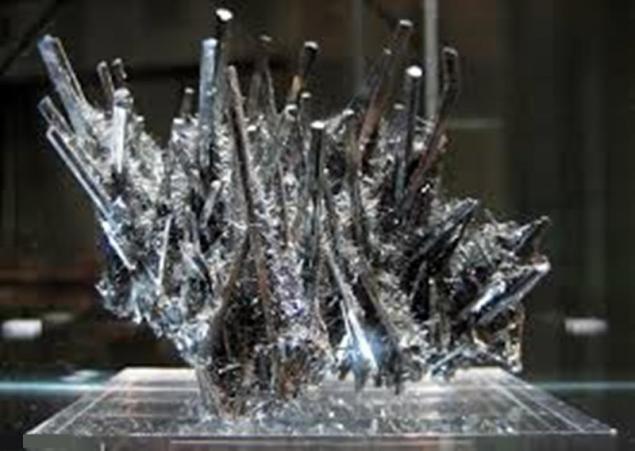
9. Orpiment (Orpiment)
The only thing that may be worse than most of arsenic that stone consisting of arsenic and sulfur. Lethal and reactive orpiment crystals grow under the ground in the form of mineral formations, often near hydrothermal vents. Orpiment colors look pretty tempting, but if you take it in the hands of the crystals it will highlight the carcinogenic, neurotoxic arsenic powder. The Chinese have made extensive use of this mineral, as well as cinnabar, but with much more dire consequences. In rastolchёnnye samples of this stone fell arrows which were then used against the enemies to poison - a rather clever way of throwing stones. Orpiment famous because it emits a strong smell of garlic because of the content of arsenic in it. It can also be scattered into a dangerous powder when exposed to light. This mineral is used as the main component for the manufacture of ocher paint, and probably poisoned many of the artists who have used it.
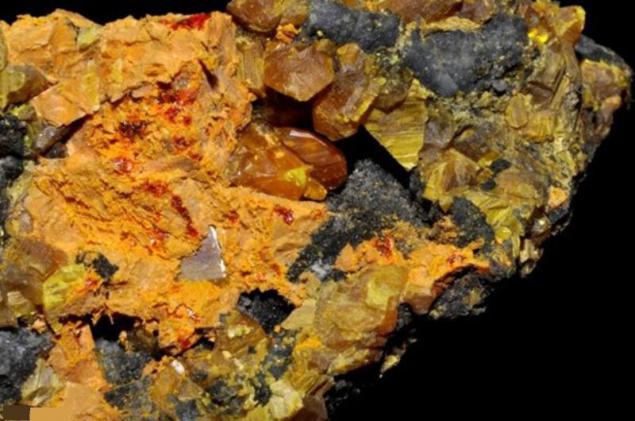
10. Cinnabar (Cinnabar)
Cinnabar (mercury sulphide) is the most toxic minerals for processing of all existing in the world. The name of the crystal means "dragon's blood". It was from cinnabar ore mined mercury. Formed near the volcanic sulfur deposits and bright red crystals signal the most terrible danger. Cinnabar pure mercury is capable of releasing during processing or heating, resulting in convulsions occur in humans, there is a loss of sensitivity, and death. In the Middle Ages, and in the late 1700s to be directed to work in the Spanish mines containing cinnabar education was considered practically a death sentence. Cinnabar is widely used in Chinese history for producing decorative food to eat, and of her pieces and carvings created bizarre, sometimes at the expense of the lives of artisans. Even more incredible is that some of the ancient doctors believed that the vermilion contained medicinal properties, and prescribed it to treat certain diseases.
All. Be careful
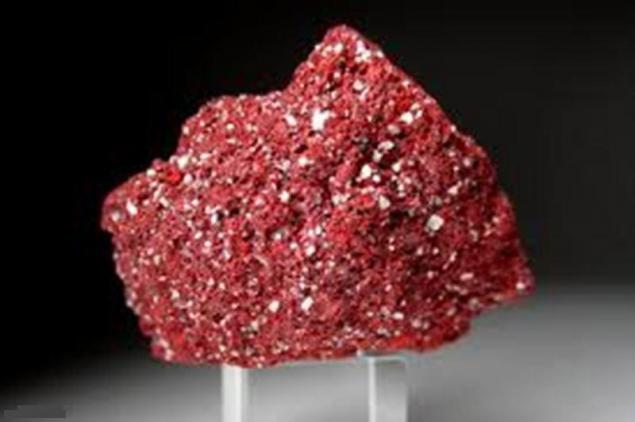
Source:
It will be 10 pictures and letters attached to them.
1. Koloradoit (Coloradoite)
Koloradoit - a newly discovered crystalline mineral normally found in the veins of magma. This mineral is a compound of mercury telluride, form when the alloy of mercury and tellurium, another highly toxic and rare metals. Therefore koloradoit toxic represents a double threat for those who dare to take it in hand. The combination of these two elements creates a risk of serious injury when carelessly handling. When heated or chemical changes, this strange mineral releases deadly vapor and dust. What is most interesting - this mineral is mined to produce tellurium contained in it. Tellurium minerals can also be found in combination with gold, but the earlier of such combinations has not been known. By a strange twist of fate deposits koloradoita developed in Australia during the gold rush of unusual after people realized that the stones of tellurium containing gold, fill potholes in the roads.

2. chalcanthite (Chalcanthite)
Alluring bluestone blue crystals composed of copper, in combination with sulfur and other elements, as well as water. This composition makes the copper, which is essential for the organism, but which becomes toxic in excessive quantities and in very bio-available crystal. In other words, the copper becomes soluble in water and can be absorbed in large quantities in any plant or animal, rapidly weakening him and then killing of the fact that the important internal organs stop working. Scientists lovers should never try to chalcanthite salt content, because in this case, they may occur extremely serious overdose of copper. Simple extraction of the crystal blue mineral that killed all the algae pond as a whole, in addition, these crystals are capable of creating great environmental problems. Because of the incredible beauty and rarity of bluestone, within the geological community appeared enterprise engaged in the cultivation of artificial crystals for sale that are advertised as authentic samples.

3. Hutchinson (Hutchinsonite)
Thallium - a grim twin lead. This dense, oily metal similar to lead by atomic weight, but is even more lethal. Thallium is a rare metal, which appears in a very toxic compound consisting of a rather strange combinations of elements. The effects of thallium is even more strange, and include hair loss, serious illness in contact with skin and in many cases lead to death. Hutchinson is a dangerous, but an amazing mixture of thallium, lead and arsenic. Three toxic metal to form a lethal cocktail of minerals, which must be handled with great care. Hutchinson was named in honor of John Hutchinson (John Hutchinson), mineralogist famous Cambridge University. This mineral can be found in the mountainous regions of Europe, mainly in the fields of ore.

4. Galena (Galena)
Galena is the principal ore used for the production of lead. It is a shiny silver cubes unnaturally perfect shape. Despite the fact that lead is usually very flexible, the sulfur content in galena makes it extremely brittle and amenable to chemical processing. Galena is able to cause severe consequences for workers and researchers, lovers, who worked with him without compliance with safety measures. Work samples may result in respirable dust. The workers in the mines are at high risk of poisoning by contact with minerals and deadly dust generated during the production. After extraction of lead from this mineral creates ecological threat to human health during his treatment and purification. Galena has a cubic process fracture, and if hit it with a hammer, the crystal will collapse into several smaller copies of their original form.

5. Asbestos (Asbestos) otherwise chrysotile (Chrysotile) or Aamfibolit (Amphibolite)
Asbestos - it's not an artificial product, however, it is one of the worst minerals on the planet. While other minerals act like toxins because of their chemical composition and accidental poisoning victims of asbestos to the fullest holds a mechanical diversion in human lung. Asbestos refers to all categories of natural minerals and consists of silicon dioxide - the most abundant mineral in the world solid, iron, sodium and oxygen. Asbestos deposits consist of clusters of thousands of tiny, whiskers, which can be transported by air. They can also easily get into your lungs. Carcinogenic effects occur due to permanent irritation of lung tissue, resulting in scarring. Education asbestos can be found among any set of siliceous rocks, so the study of these rocks have to comply with the relevant safety rules. Oddly enough, the natural weathering leads to the spread of natural asbestos in the atmosphere. As a result, in the lungs of many people can find a small amount of asbestos fibers.

6. Arsenopyrite (Arsenopyrite)
Arsenopyrite - it's fool's gold, but with a slight difference. Man, confusing it with gold, will not just be a fool. Equally silly solution is picking up this mineral from the earth during the campaign for a career, and further use of the hands, which visited this mineral for the preparation and consumption of food. Arsenopyrite is iron sulphide and arsenic, which relates to the same type minerals as pyrite (fools gold or iron sulfide), the difference lies in the fact that it contains a heavy arsenic addition. When you try to heat or any change in the mineral, he begins to exude a strong garlic odor of arsenic, which comes from a fatally toxic, corrosive and carcinogenic fumes produced by this mineral. Even the processing of this mineral causes a person to contact with the volatile sulfur salts of arsenic. Interestingly, the arsenopyrite can be determined simply by hitting it with a hammer. As soon as the sparks fly, you can for a brief moment to feel a strong smell of garlic.

7. Thorburn (Torbernite)
Thorburn is a mineral from hell. Green prisms are formed as secondary deposits in granitic rocks and consist of uranium. Formed in the complex reaction between phosphorus, copper, uranium and water, great clusters of crystals often tempted collectors of its kind, so people took samples of these minerals for their collections, arranged on shelves. If the decay of uranium in Chernobyl was not enough, the deadly radon gas, can cause lung cancer, slow the basis of these beautiful stones. This is the crystal that is left alone. Thorburn can be found in the granite, so your granite countertop can easily contain traces torbernita. Bright green cluster of crystals are used as indicators of the miners of uranium deposits.

8. Stibnite (Stibnite)
Stibnite antimony sulphide is, however, looks like silver. For this reason, a huge, shiny metallic crystals of this unstable compound used once to tide excellent dishes. However, the crystals in the form of a sword bring death to all those who have used them. Stibnite crystals interspersed with antimony killed a considerable number of people, before it became known that the use of this mineral is one of the worst food poisoning. Even if stibnite samples collected for the collection, they should be treated with great care, to avoid poisoning. It is recommended to wash your hands after any contact with this mineral. In the mines near Osaka in Japan made the best crystals of stibnite in the world, its size reaches 30 centimeters in length. Most samples stibnite like tiny spikes.

9. Orpiment (Orpiment)
The only thing that may be worse than most of arsenic that stone consisting of arsenic and sulfur. Lethal and reactive orpiment crystals grow under the ground in the form of mineral formations, often near hydrothermal vents. Orpiment colors look pretty tempting, but if you take it in the hands of the crystals it will highlight the carcinogenic, neurotoxic arsenic powder. The Chinese have made extensive use of this mineral, as well as cinnabar, but with much more dire consequences. In rastolchёnnye samples of this stone fell arrows which were then used against the enemies to poison - a rather clever way of throwing stones. Orpiment famous because it emits a strong smell of garlic because of the content of arsenic in it. It can also be scattered into a dangerous powder when exposed to light. This mineral is used as the main component for the manufacture of ocher paint, and probably poisoned many of the artists who have used it.

10. Cinnabar (Cinnabar)
Cinnabar (mercury sulphide) is the most toxic minerals for processing of all existing in the world. The name of the crystal means "dragon's blood". It was from cinnabar ore mined mercury. Formed near the volcanic sulfur deposits and bright red crystals signal the most terrible danger. Cinnabar pure mercury is capable of releasing during processing or heating, resulting in convulsions occur in humans, there is a loss of sensitivity, and death. In the Middle Ages, and in the late 1700s to be directed to work in the Spanish mines containing cinnabar education was considered practically a death sentence. Cinnabar is widely used in Chinese history for producing decorative food to eat, and of her pieces and carvings created bizarre, sometimes at the expense of the lives of artisans. Even more incredible is that some of the ancient doctors believed that the vermilion contained medicinal properties, and prescribed it to treat certain diseases.
All. Be careful

Source:





















